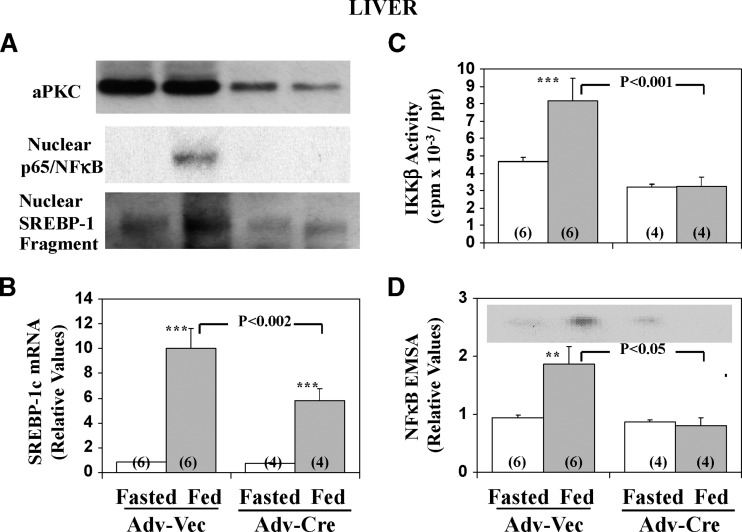Fig. 4.
Effect of depletion of hepatic PKC-λ on feeding-dependent increases in hepatic nuclear levels of immunoreactive p65/RelA/NFκB and the active SREBP-1 fragment (A), SREBP-1c mRNA (B), IKKβ activity (C) and NFκB electrophoretic mobility shift assay (EMSA) activity (D). Mice with two floxed PKC-λ alleles (17) were treated IV with adenovirus (Adv-Vec) or adenovirus encoding Cre-recombinase (Adv-Cre). Four weeks later, the mice were fasted overnight or allowed their usual normal-chow diet (fed), and then killed. Values are mean ± SEM of (N) determinations. Asterisks indicate P < 0.05 (*), P < 0.01 (**) and P < 0.001 (***) for feeding-stimulated values (shaded bars) versus adjacent basal fasting values (clear bars). P values (as per ANOVA) depict comparisons of indicated groups (viz., feeding-stimulated adenoviral-Cre–treated mice versus feeding-stimulated adenoviral-vector–treated mice). Panel A also shows levels of hepatic total aPKC [mouse liver contains comparable amounts of PKC-λ and PKC-ζ mRNAs (Ref. 4 and confirmed in our lab); this explains the residual aPKC seen after Cre-recombinase–mediated loss of PKC-λ. Representative autoradiogram of the electrophoretically purified NFκB-DNA complex seen in the EMSA (D). See Fig. 5 for further description of EMSA autoradiographic findings.

